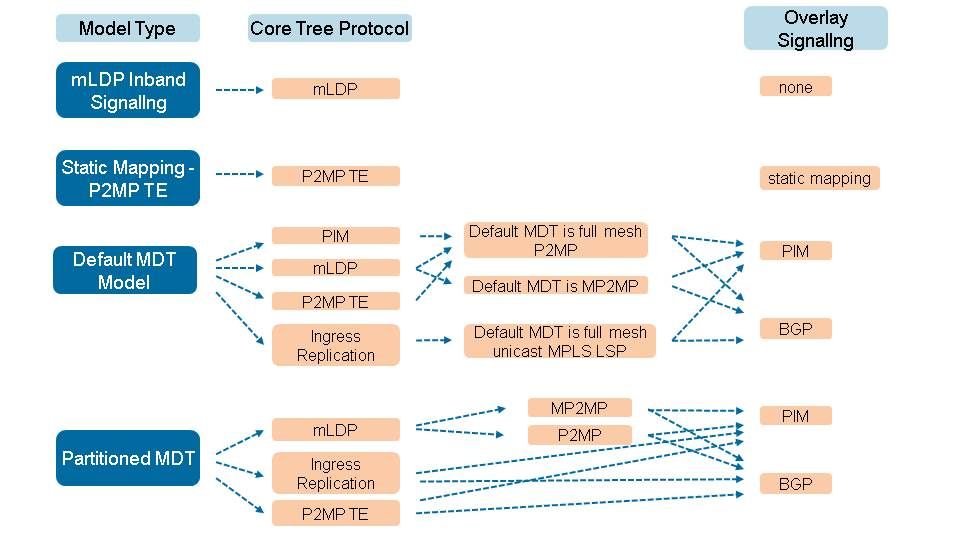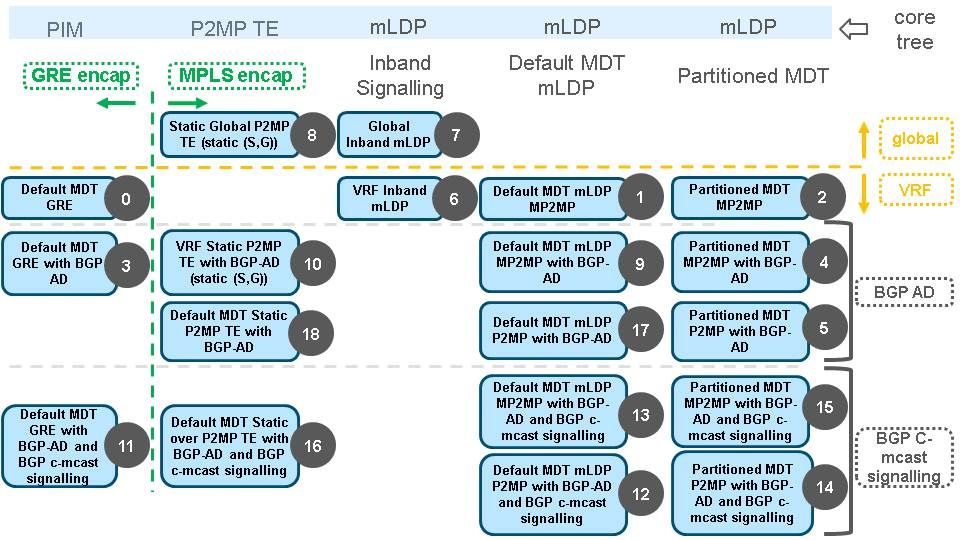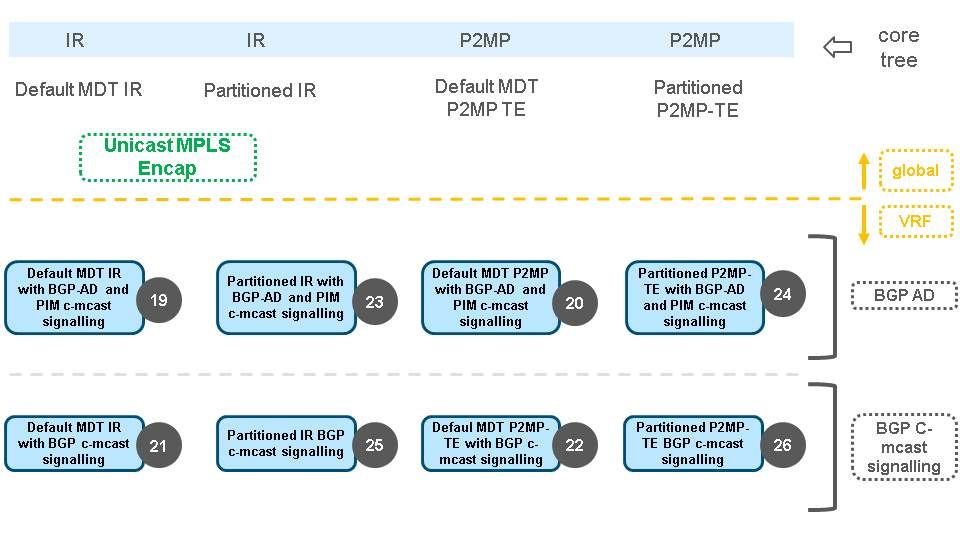Introduction
This document provides an overview of the Multicast over VPN (mVPN ) profiles.
Prerequisites
Requirements
There are no specific requirements for this document.
Components Used
This document is not restricted to specific software and hardware versions.
The information in this document was created from the devices in a specific lab environment. All of the devices used in this document started with a cleared (default) configuration. If your network is live, make sure that you understand the potential impact of any command.
Overview of mVPN Profiles
The following three images provide an overview of all the profiles currently possible.
Note these details:
- There are columns that list the possible technologies that create the tree in the core network.
- The green line divides the possibilities into two sets by encapsulation: Generic Routing Encapsulation (GRE) or Multiprotocol Label Switching (MPLS) encapsulation.
- The yellow line devides the possibilities into two sets by their context: Multicast in the Global context or Multicast in the Virtual Routing and Forwarding (VRF) context.
- There are three sets, each with an additional level of Border Gateway Protocol (BGP) signaling: No BGP signaling (except IPv4 Multicast Distribution Tree (MDT) for Default MDT GRE), only BGP Auto-Discovery (AD), or BGP AD and BGP C-MCAST signaling (customer signaling of Multicast in overlay). An "additional" level of BGP signaling means a level in addition to the BGP signaling that is always needed for unicast over MPLS VPN.
- "Rosen" was renamed to "Default MDT"
- There is a total of 27 profiles, numbered 0 to 26.
Image 1 shows the different ways of implementing multicast over MPLS. There are 4 type of core tree protocols: PIM, mLDP, P2MP TE, and Ingress Replication. There are 4 possibilities for the overlay signaling (or the mapping of multicast state on the edge onto the core trees): none, static mapping, PIM, and BGP.

Image 1
Image 2 and 3 show an overview of the mVPN profiles.

Image 2

Image 3